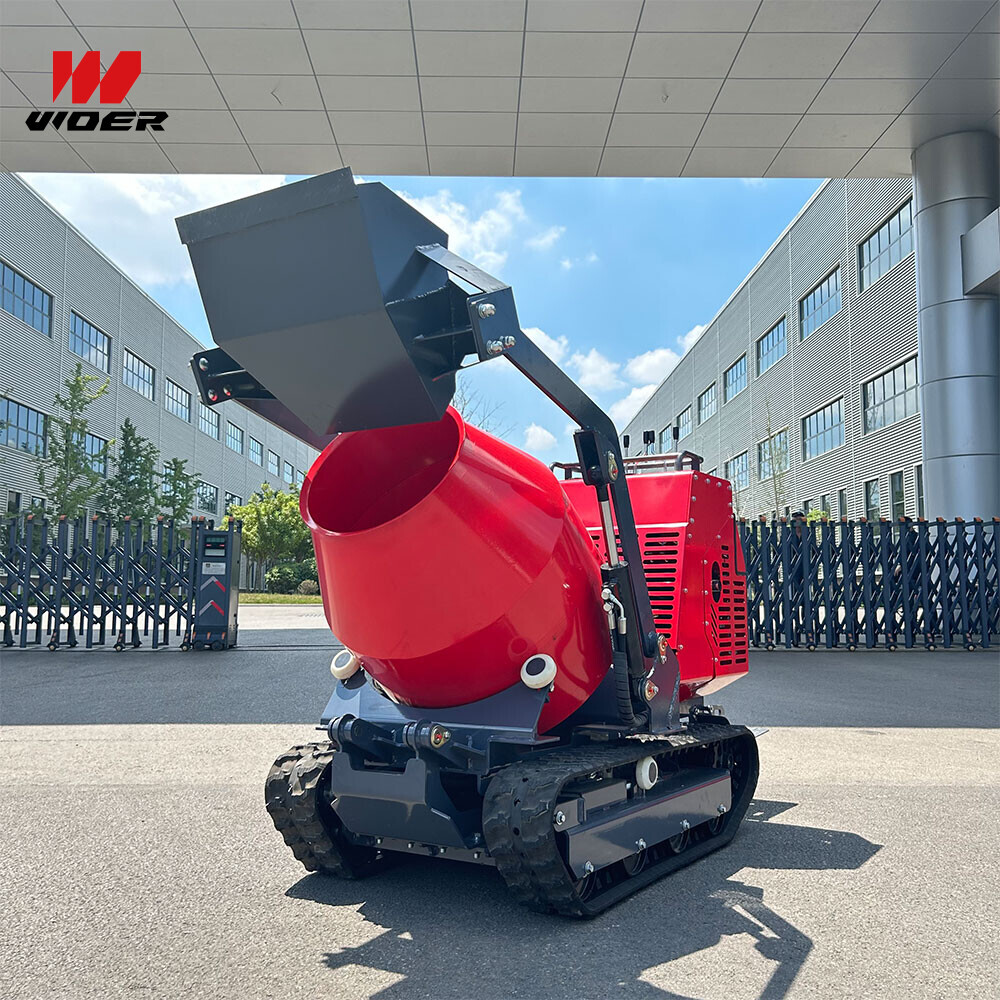Navigation
Contact us
Phone
Message

Operating a self-loading mini dumper truck requires more than just basic skills—it demands thorough safety awareness. Many operators overlook critical precautions when handling hydraulic mini dumpers or rubber tracks mini dumpers, risking both efficiency and workplace safety. Whether you're using hydraulic articulated mini dumpers or diesel mini dumpers, understanding proper operation protocols can prevent accidents and extend equipment lifespan. This guide reveals commonly missed safety practices that every operator, evaluator, and decision-maker in the wood processing equipment industry should know.
1. Pre-Operation Inspection: The Foundation of Safety
A thorough pre-operation inspection is the first line of defense against accidents when working with self-loading mini dumpers. According to OSHA standards, equipment failure accounts for nearly 20% of construction and wood processing site incidents—many preventable with proper checks.
For hydraulic mini dumpers, pay special attention to:
- Hydraulic fluid levels and potential leaks (check hoses and connections)
- Functionality of articulated joints on hydraulic articulated mini dumpers
- Track tension and wear on rubber tracks mini dumpers
- Engine oil and coolant levels in diesel mini dumpers
Create a standardized checklist that includes these critical components, along with brake systems, steering responsiveness, and load-bearing structures. Documenting these inspections not only improves safety but also helps with maintenance scheduling and warranty claims.
2. Load Management: Beyond Weight Limits
While most operators understand the importance of not exceeding rated capacity (typically 1,000-3,000 kg for mini dumpers in wood processing), few consider the dynamic forces at play. A study by the European Agency for Safety and Health at Work found that improper load distribution causes 34% of tipping incidents with compact earthmoving equipment.
Key considerations for safe loading:
Remember that wood processing materials like logs or wood chips can shift during transport. Use appropriate containment systems and consider the moisture content of materials—wet wood weighs significantly more than dry.
3. Terrain Assessment and Adaptation
Wood processing sites present unique terrain challenges that demand specific adaptations for mini dumper operation. Rubber tracks mini dumpers may excel in muddy conditions common near debarking stations, while hydraulic articulated mini dumpers offer better maneuverability in confined lumber storage areas.
Critical terrain factors to assess:
- Ground bearing pressure (especially important for diesel mini dumpers with higher weight)
- Overhead clearance when transporting stacked lumber
- Surface stability near wood waste collection areas
- Slope gradients near loading docks or processing lines
Implement a site-specific risk assessment protocol that includes regular terrain evaluation, especially after weather changes or site modifications. The German Social Accident Insurance (DGUV) recommends weekly terrain assessments for wood processing facilities using compact earthmoving equipment.
4. Operator Training and Fatigue Management
While equipment manufacturers provide basic operation manuals, wood processing environments require specialized training. A 2022 report by the Forest Products Safety Council revealed that 62% of mini dumper incidents involved operators with less than 50 hours of specific model experience.
Essential training components should cover:
- Differences between hydraulic mini dumper and diesel mini dumper controls
- Emergency procedures for hydraulic system failures
- Proper use of articulated steering systems
- Load sensing and stability indicators
Additionally, implement fatigue management protocols. The repetitive nature of material transport in wood processing can lead to complacency. Consider job rotation schedules and mandatory break periods after continuous operation.
5. Maintenance Protocols for Long-Term Safety
Preventive maintenance is often the difference between reliable operation and catastrophic failure. Data from equipment manufacturers shows that properly maintained hydraulic mini dumpers experience 40% fewer hydraulic system failures than those with irregular servicing.
Develop a maintenance schedule that addresses:
- Hydraulic filter changes (every 500 hours for standard hydraulic mini dumpers)
- Track tension adjustments for rubber tracks mini dumpers (daily checks)
- Articulated joint lubrication (weekly for high-use equipment)
- Engine maintenance for diesel mini dumpers (follow manufacturer intervals)
Use condition monitoring technologies where possible. Many modern self-loading mini dumpers come equipped with telematics systems that can predict maintenance needs based on operating parameters.
6. Personal Protective Equipment (PPE) and Site Coordination
Operator PPE requirements often extend beyond standard hard hats and safety boots in wood processing environments. The combination of moving equipment and wood materials creates unique hazards that many safety managers overlook.
Essential PPE for mini dumper operations:
- High-visibility clothing with reflective strips
- Hearing protection (especially for diesel mini dumpers)
- Cut-resistant gloves for handling wood materials
- Safety glasses with side shields
Implement clear site communication protocols. The confined spaces common in wood processing facilities require strict coordination between mini dumper operators and ground personnel. Consider using standardized hand signals or wireless communication systems in high-traffic areas.
Conclusion: Building a Culture of Safety
Safe operation of self-loading mini dumpers in wood processing requires more than just following basic guidelines—it demands a comprehensive safety culture. From hydraulic mini dumpers to rubber tracks models, each piece of equipment presents unique challenges that require specific knowledge and protocols.
By implementing these often-overlooked safety practices, wood processing facilities can:
- Reduce equipment downtime by up to 30%
- Decrease workplace incidents involving mini dumpers
- Extend the service life of hydraulic articulated mini dumpers and other models
- Improve overall operational efficiency
For a customized safety assessment of your wood processing operation's mini dumper fleet, contact our team of equipment specialists today. We offer comprehensive safety audits, operator training programs, and maintenance planning services tailored to hydraulic mini dumpers, diesel mini dumpers, and all other models common in the industry.

This stunning beach house property is a true oasis, nestled in a serene coastal community with direct access to the beach.
Contact
West Street, Melbourne Victoria 3000 Australia